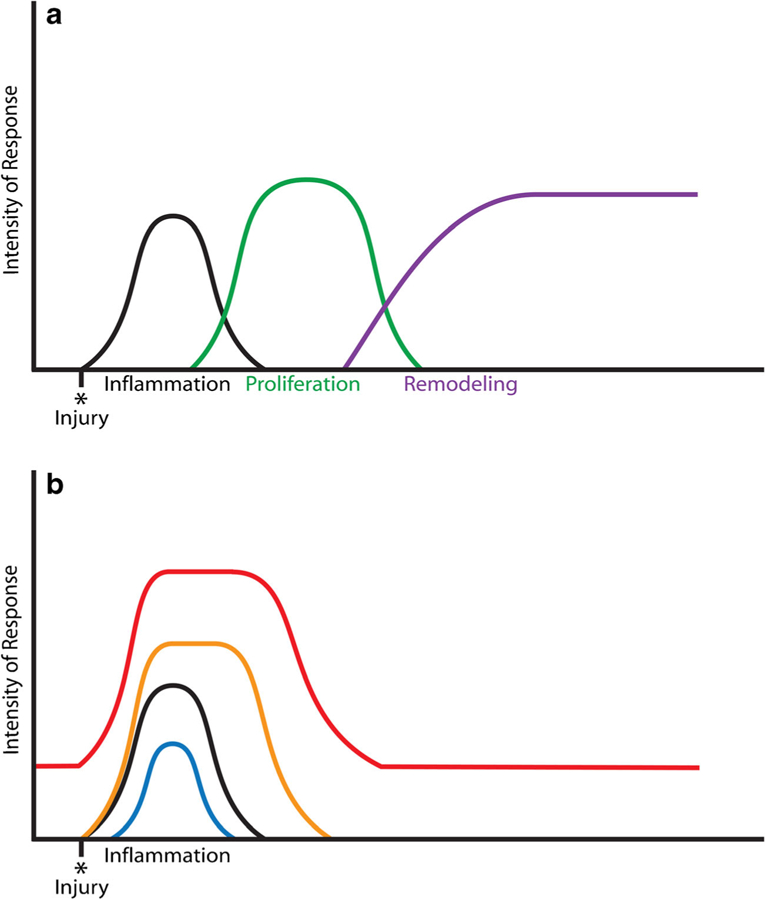Fig. 2.

The effects of inflammatory response perturbation on the stages of fracture healing. a Fracture healing follows three general stages of inflammation, proliferation, and remodeling. The initial inflammatory response is tightly regulated and crucial in initiating the subsequent stages of healing. b Systemic conditions, including increased age, have an effect on inflammation and may result in differential inflammatory responses during fracture healing. Senescence of the inflammatory response results in a decreased and limited inflammatory response (blue curve) that may result in inadequate activation of the proceeding healing stages. An exaggerated and sustained response (orange and red curves) can result from inadequate resolution of the response and may negatively affect the proceeding stages. An increased basal level of inflammation (red curve) is proposed to occur with inflamm-aging and would have possible negative effects throughout the healing process
